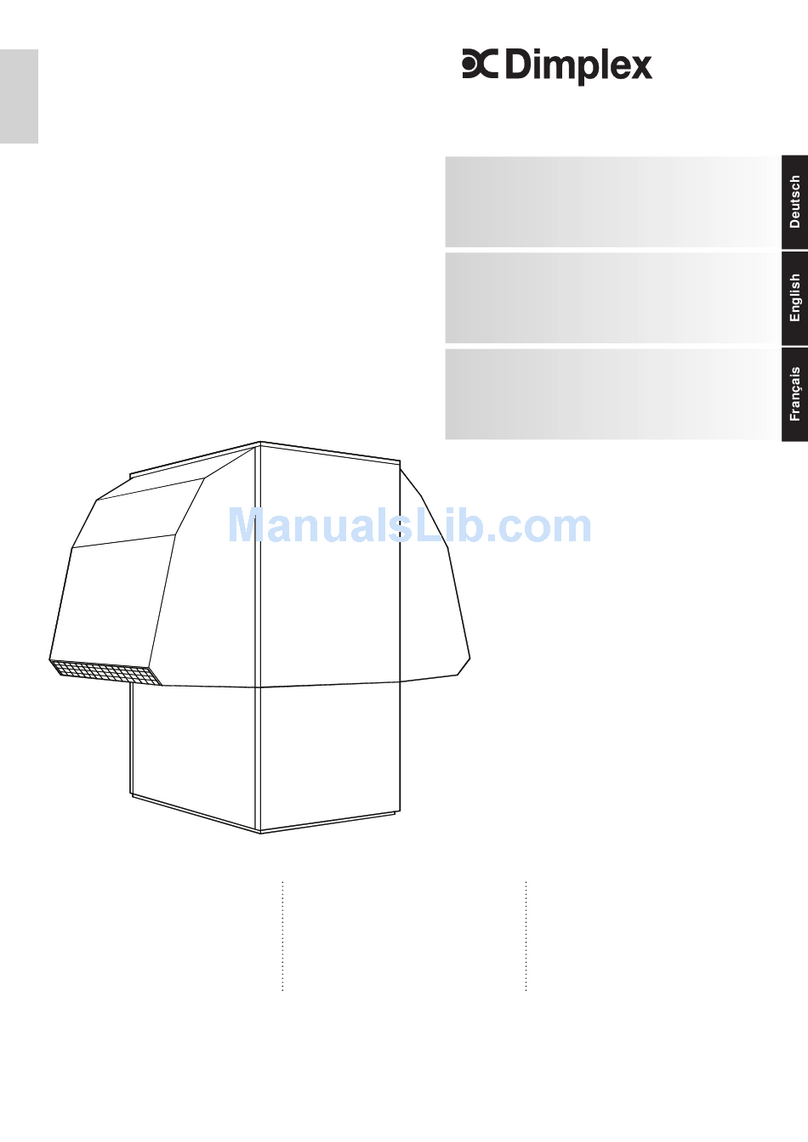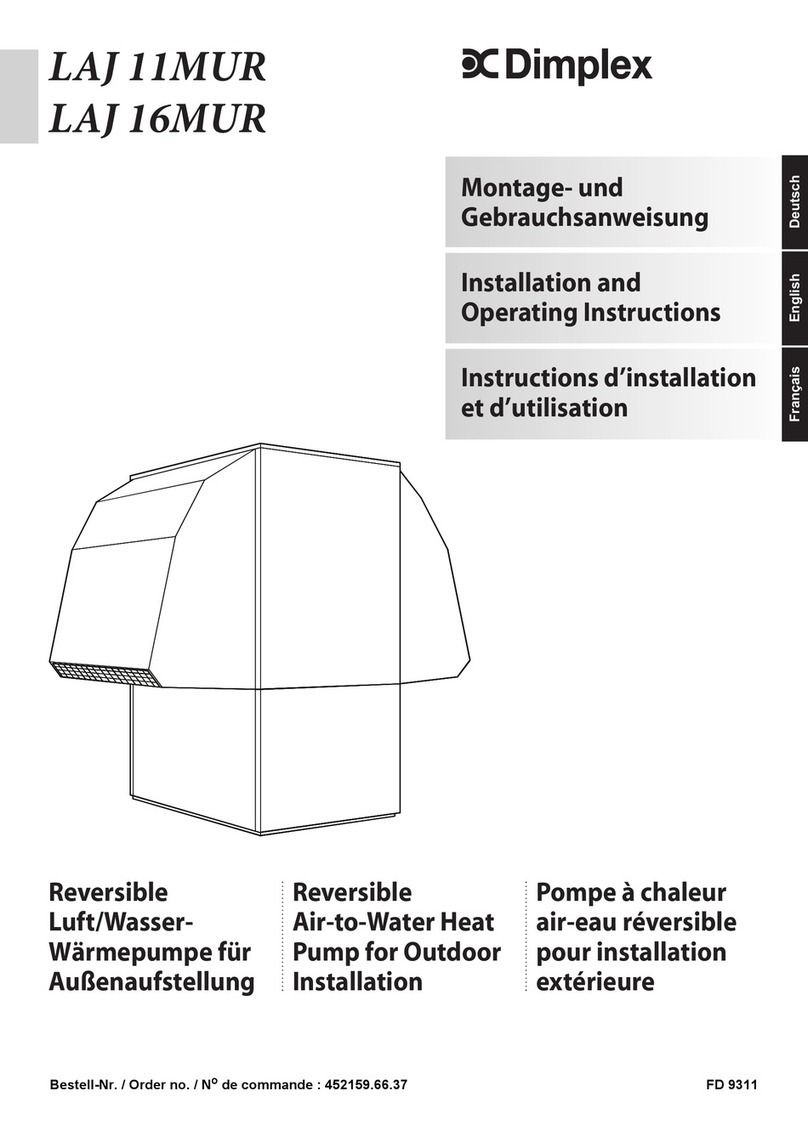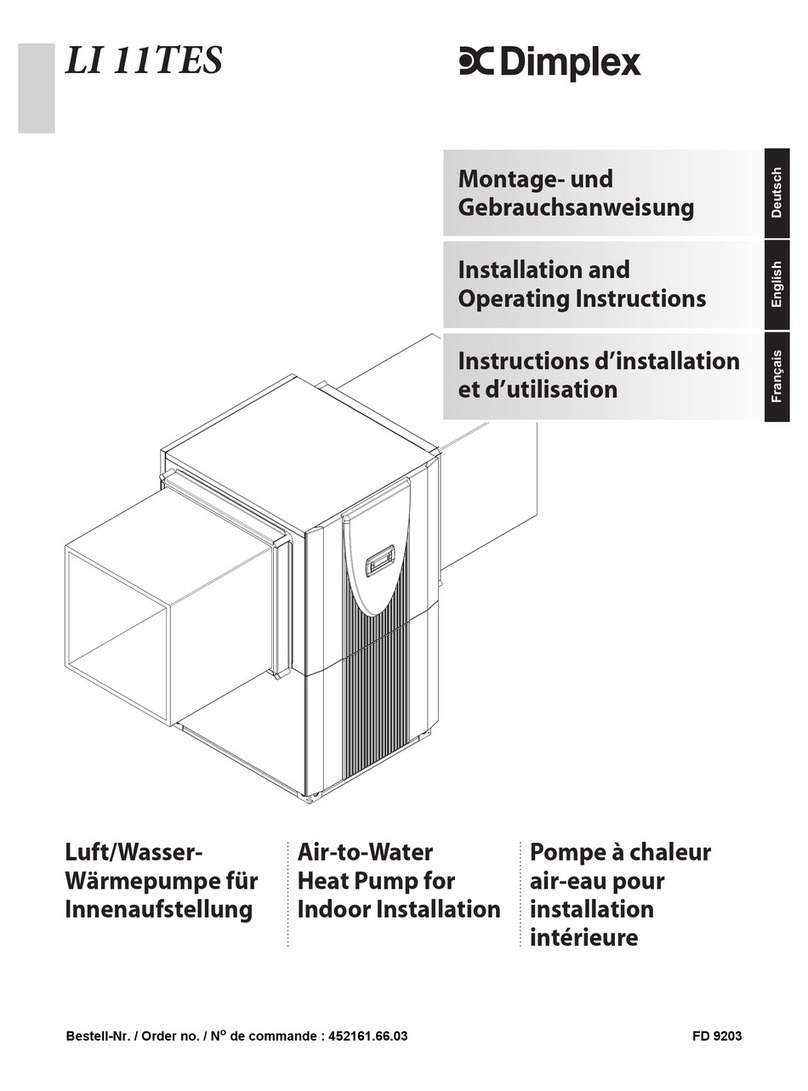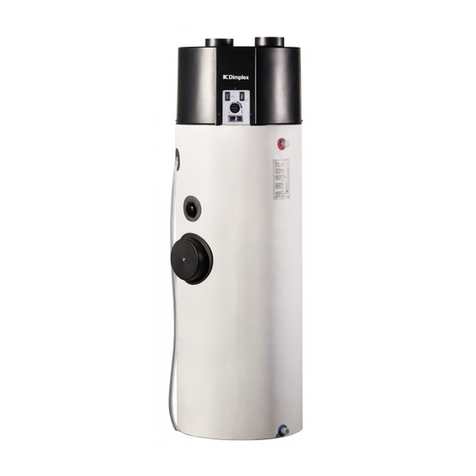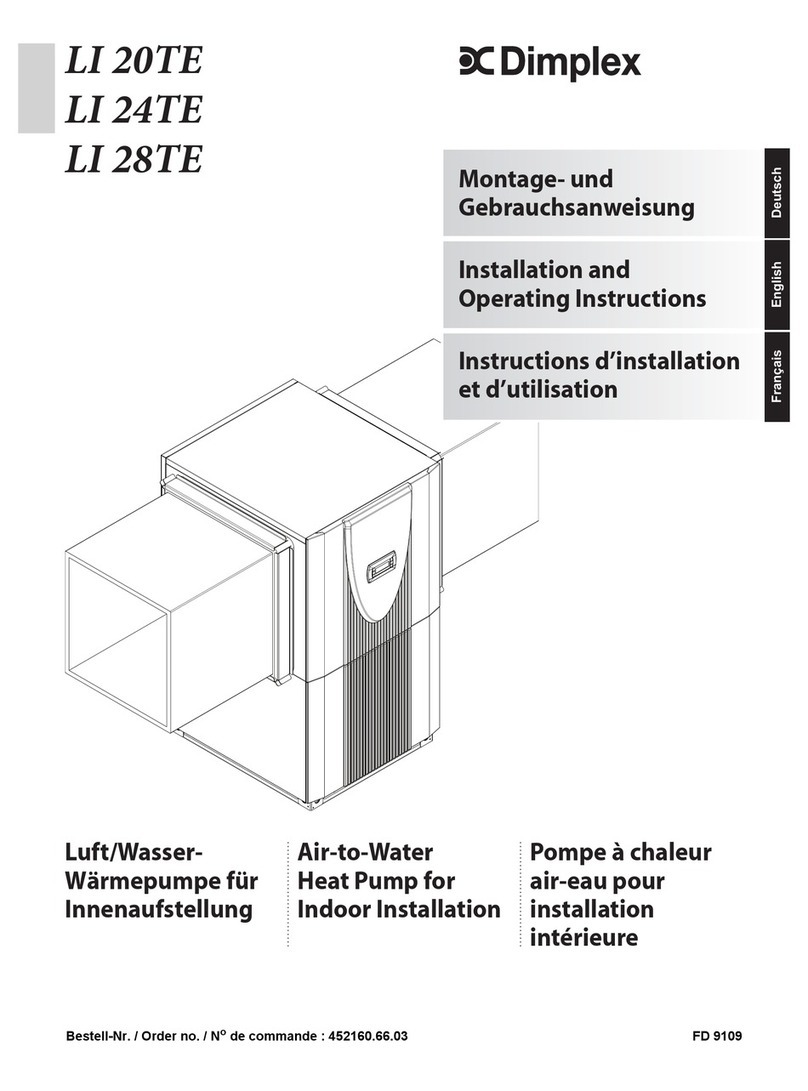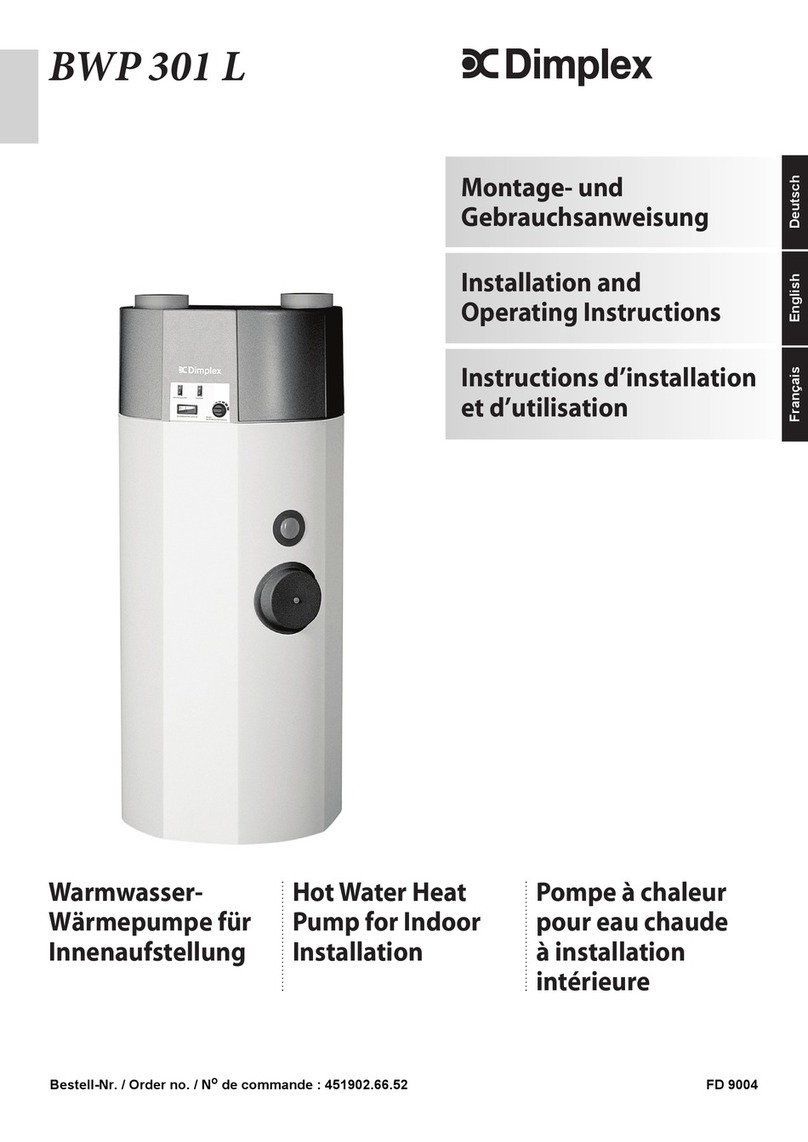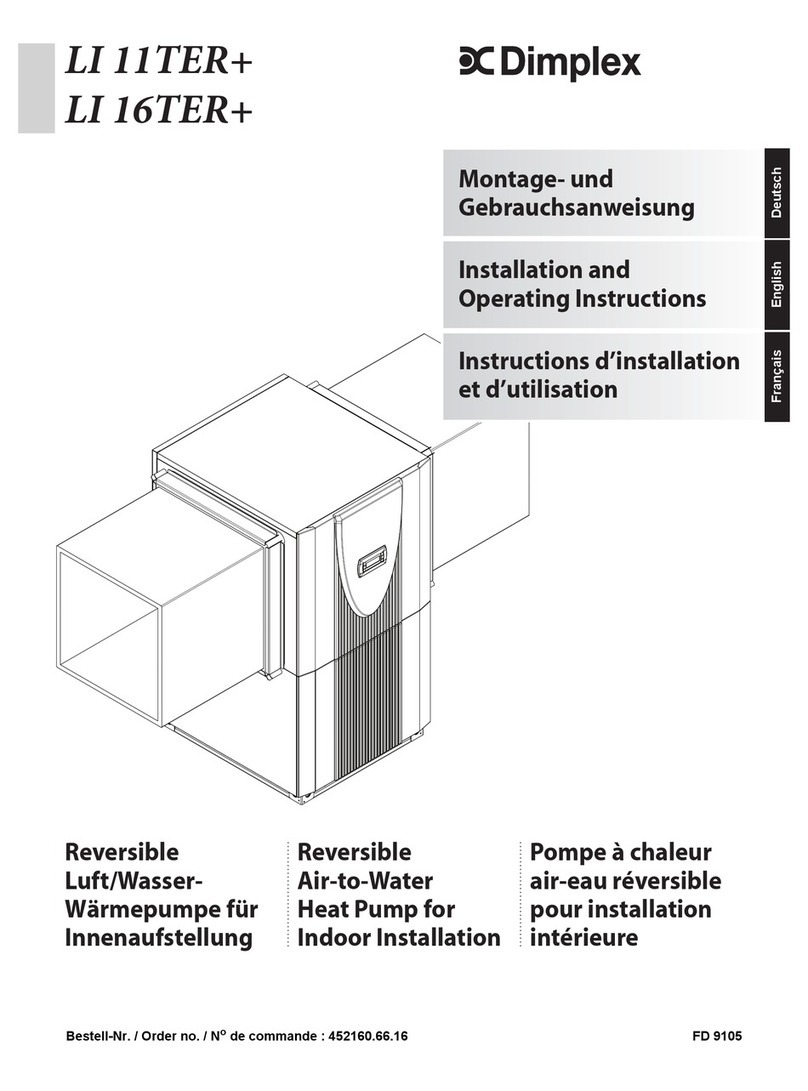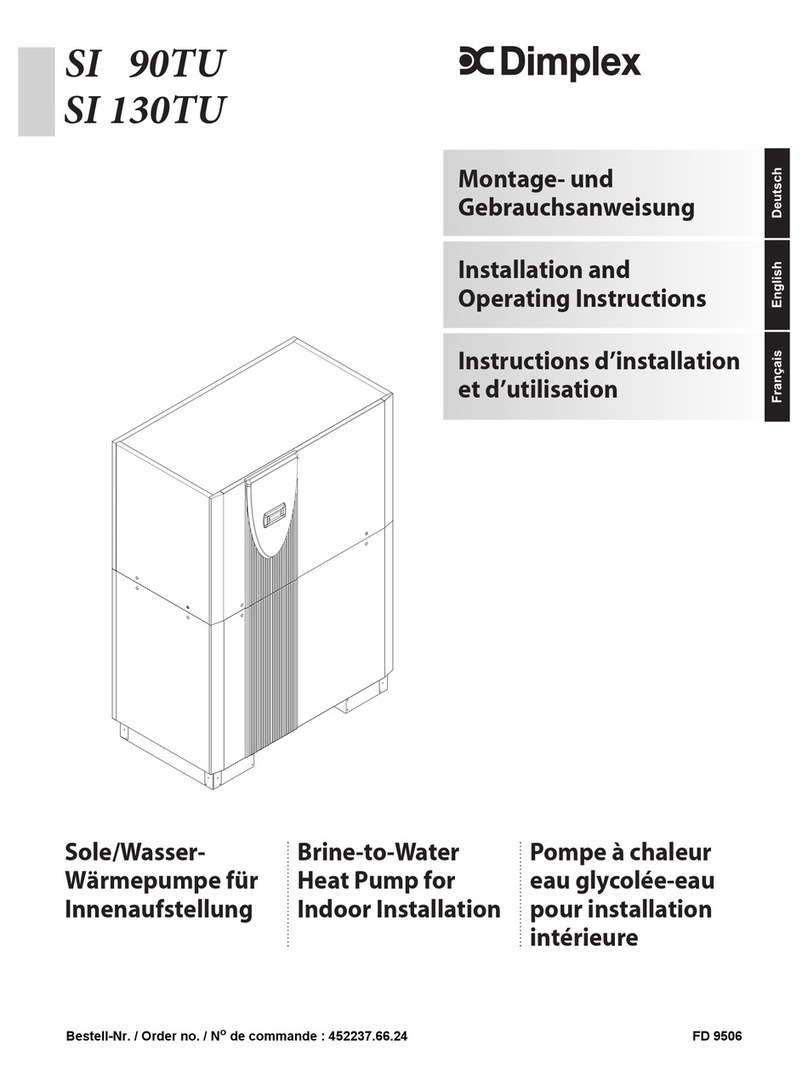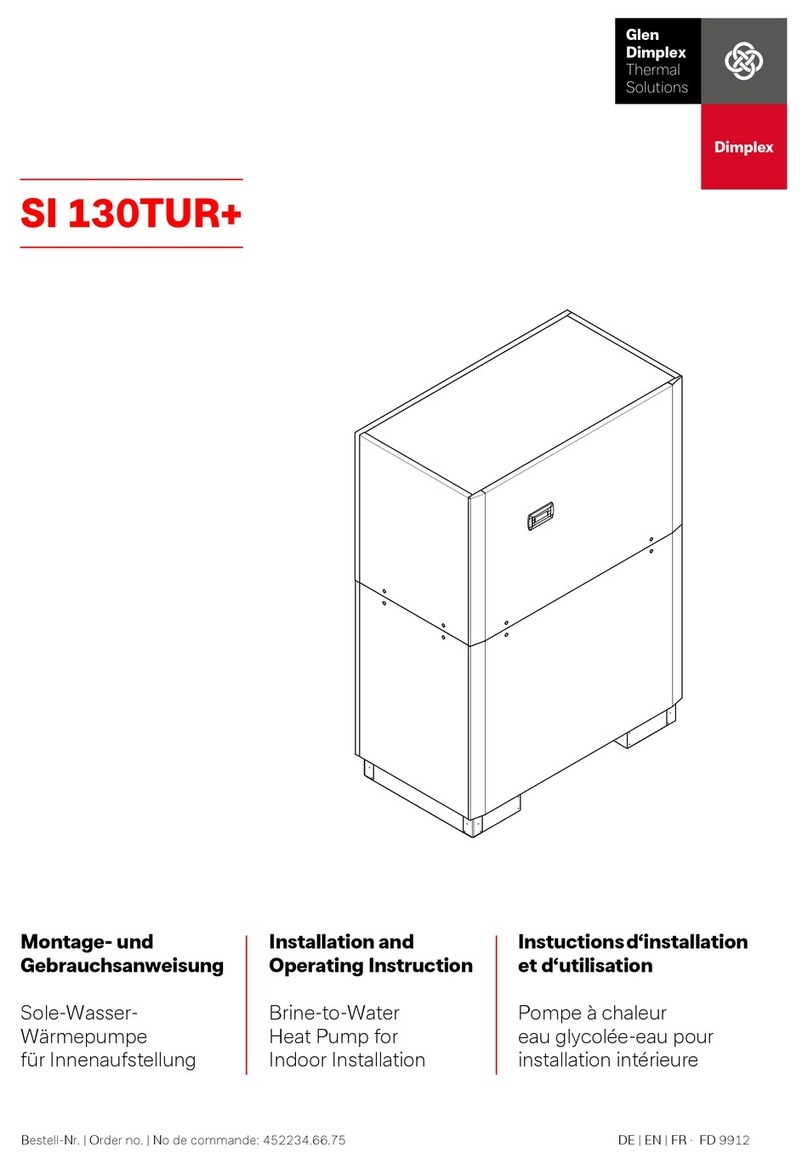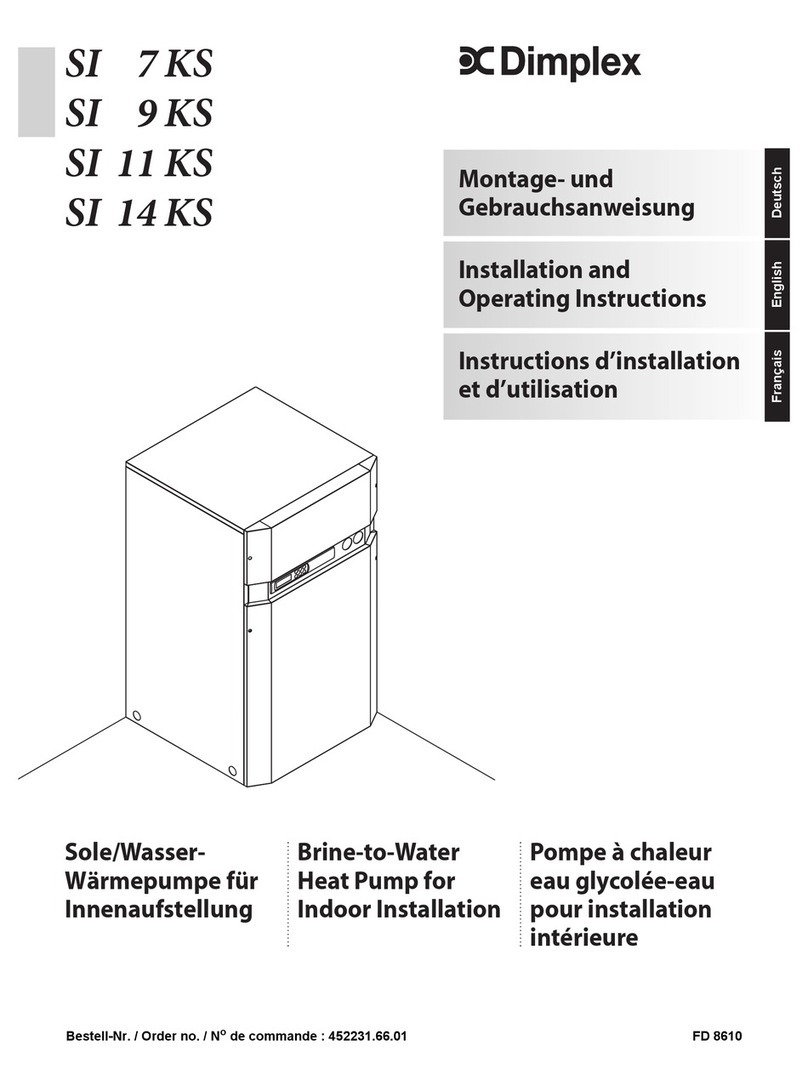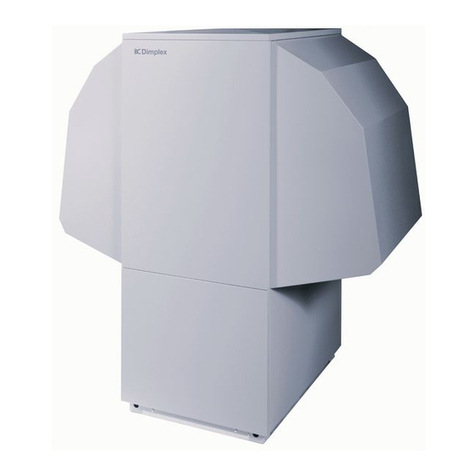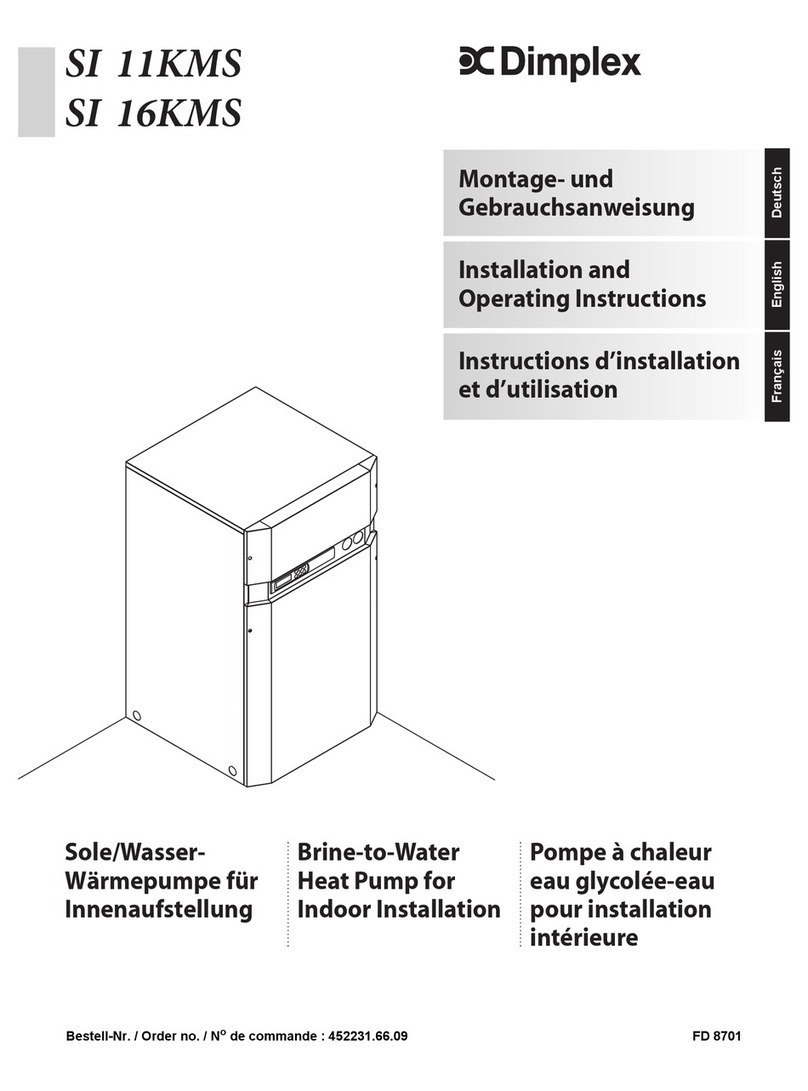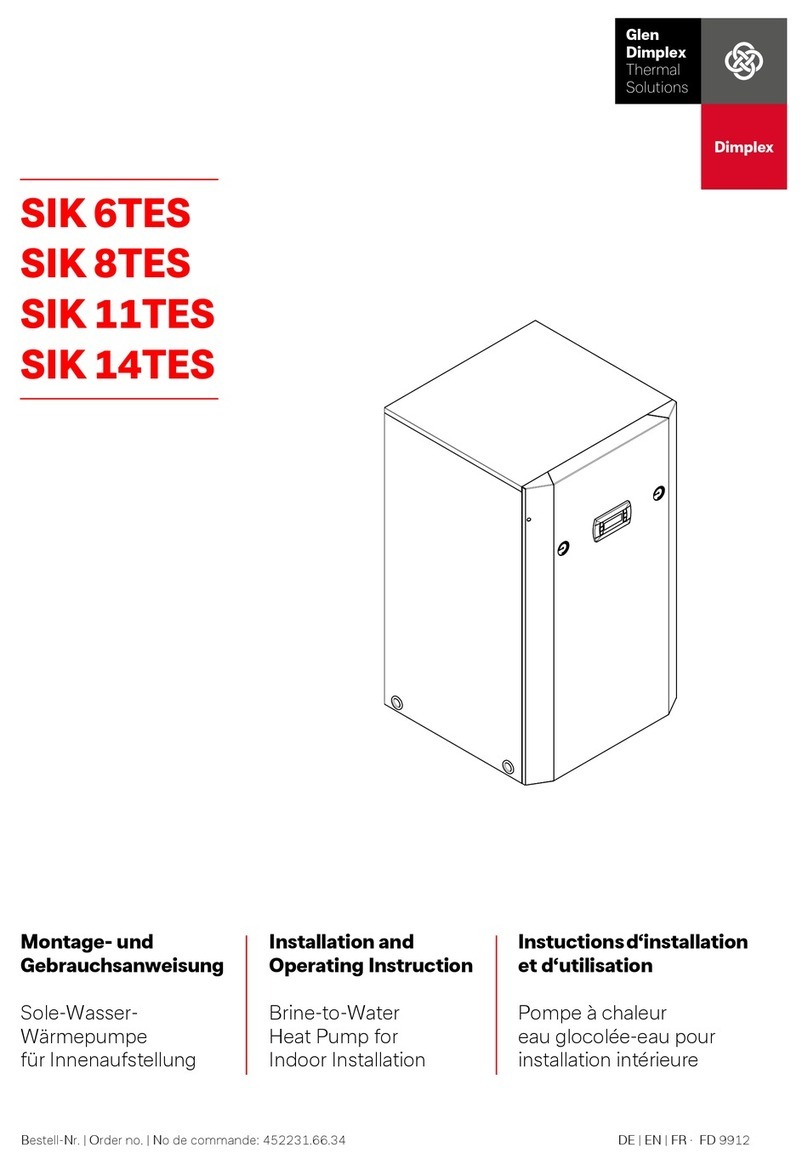EN-6
English
7
The control lines (not included in the scope of supply) have rec-
tangular plug connectors on both ends. One end is connected to
the heat pump manager, and the other end is connected to the
switch box in the heat pump. The plug connections to the heat
pump are located on the bottom of the switch box.
Two separate lines are used as control lines. One of the lines is
designed for the 230 V control voltage level, the other for the sig-
nal and/or extra-low voltage level.
More detailed information can be found in the operating instruc-
tions of the heat pump manager.
For detailed information, see circuit diagrams in the Appendix.
7 Start-Up
7.1 General
To ensure that start-up is performed correctly, it should only be
carried out by an after-sales service technician authorised by the
manufacturer. This may be a condition for extending the guaran-
tee (see Warranty Service).
7.2 Preparation
The following items need to be checked prior to start-up:
All of the heat pump connections must be installed as de-
scribed in Chapter 6.
All valves that could impair the proper flow of the heating
water in the heating circuit must be open.
The air intake and air outlet paths must be clear.
The fan must turn in the direction indicated by the arrow.
The settings of the heat pump manager must be adapted to
the heating system in accordance with the manager’s oper-
ating instructions.
Ensure the condensate outflow functions properly.
7.3 Procedure
The heat pump is started up via the heat pump manager. Adjust-
ments should be made in compliance with the instructions.
If an overflow valve is fitted to maintain the minimum heating
water flow, the valve must be adapted to the requirements of the
heating system. Incorrect adjustment can lead to faulty operation
and increased energy consumption. We recommend carrying out
the following procedure to correctly adjust the overflow valve:
Close all of the heating circuits that may also be closed during
operation (depending on the type of heat pump usage) so that
the most unfavourable operating state - with respect to the water
flow - is achieved. This normally means the heating circuits of the
rooms on the south and west sides of the building. At least one
heating circuit must remain open (e.g. bathroom).
The overflow valve should be opened far enough to produce the
maximum temperature spread between the heat flow and heat
return flow listed in the following table for the current heat source
temperature. The temperature spread should be measured as
close as possible to the heat pump. The heating element of mono
energy systems should be disconnected.
Any faults occurring during operation are displayed on the heat
pump manager and can be corrected as described in the heat
pump manager's operating instructions.
At hot water temperatures under 7 °C, start-up is not possible.
The water in the buffer tank must be heated to a minimum of
18 °C with the second heat generator.
To ensure a problem-free start-up, the following procedure is to
be implemented:
1) Close all consumer circuits.
2) Ensure that the heat pump has the correct water flow.
3) Use the controller to select the automatic operating mode.
4) In the special functions menu, start the “Start-up“ program.
5) Wait until a return flow temperature of at least 25 °C has
been reached.
6) Now slowly reopen the heating circuit valves in succession
so that the heating water flow is constantly raised by slightly
opening the respective heating circuit. The heating water
temperature in the buffer tank must not be allowed to drop
below 20 °C during this process. This ensures that the heat
pump can be defrosted at any time.
7) When all heating circuits are fully opened and a return flow
temperature of at least 18 °C is maintained, set a minimum
volume flow quantity on the overflow valve (where present)
and on the heat circulating pump.
Heat source tempera-
ture Max. temperature spread
between heat flow and return flow
of to
-20 °C -15 °C 4 K
-14 °C -10 °C 5 K
-9 °C -5 °C 6 K
-4 °C 0 °C 7 K
1 °C 5 °C 8 K
6 °C 10 °C 9 K
11 °C 15 °C 10 K
16 °C 20 °C 11 K
21 °C 25 °C 12 K
26 °C 30 °C 13 K
31 °C 35 °C 14 K


